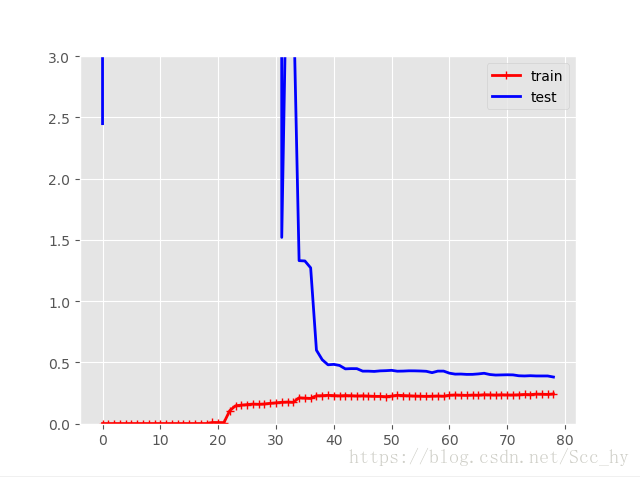学习曲线(过拟合与欠拟合)
1. 多项式线性拟合
# 多项式
import numpy as np
x = 6*np.random.rand(100,1) -3
y = 2 + 0.5 * x ** 2 + x + np.random.rand(100, 1)
import matplotlib.pyplot as plt
plt.style.use('ggplot')
plt.scatter(x, y, s=2, c='red',alpha=0.7)
plt.show()
# 拟合多项式
from sklearn.preprocessing import PolynomialFeatures
poly_features = PolynomialFeatures(degree=2, include_bias=False)
x_ploy = poly_features.fit_transform(x)
## 用将特征装换为 x的一次和x的二次
from sklearn.linear_model import LinearRegression
lr = LinearRegression()
lr.fit(x_ploy, y)
lr.intercept_, lr.coef_
# 图示
y_1 = lr.predict(x_ploy)
plt.scatter(x, y, s=2, c='steelblue',alpha=0.7)
plt.scatter(x, y_1, c='red', s=3, alpha=0.6)
plt.show()2、 学习曲线
画出模型在训练集上的表现,同时画出训练规模自变量的训练集函数。
为了得到图像,需要在训练集的不同规模子集上进行多次训练
欠拟合
def plot_learning_curves(model, x, y):
x_train, x_test, y_train, y_test = train_test_split(x, y, test_size = 0.2)
train_errors, test_errors = [], []
for m in range(1, len(x_train)):
model.fit(x_train[:m], y_train[:m])
y_train_pre = model.predict(x_train[:m])
y_test_pre = model.predict(x_test)
train_errors.append(mean_squared_error(y_train_pre, y_train[:m]))
test_errors.append(mean_squared_error(y_test_pre, y_test))
plt.plot(np.sqrt(train_errors),'r-+', lw=2, label='train')
plt.plot(np.sqrt(test_errors),'b-', lw=2, label='test')
plt.legend(loc = 'upper right')
plt.ylim(0,3)
plt.show()
lr = LinearRegression()
plot_learning_curves(lr, x, y)
当加入一些新的样本的时候,训练集的拟合程度变的难以接受:
原因一:数据中含有噪声,
原因二:数据根本不是线性的
随着着数据规模的增大,误差也会一直增大,直到达到高原地带并趋于稳定,
在之后,继续加入新的样本,模型的平均误差不会变得更好或者更差
过拟合
from sklearn.pipeline import Pipeline
ploynomial_regression = Pipeline((
('poly_reg', PolynomialFeatures(degree=10, include_bias=False)), # 高阶多项拟合
('lr', LinearRegression()),
))
plot_learning_curves(ploynomial_regression, x, y)
在训练集上,误差要比线性回归模型低的多。
图中的两条曲线之间有间隔,这意味模型在训练集上的表现要比验证集上好的多,这也是模型过拟合的显著特点。当然,如果你使用了更大的训练数据,这两条曲线最后会非常的接近。
3、一个模型的泛化误差由三个不同误差的和决定:
- 偏差:泛化误差的这部分误差是由于错误的假设决定的。例如实际是一个二次模型,你却假设了一个线性模型。一个高偏差的模型最容易出现欠拟合。
- 方差:这部分误差是由于模型对训练数据的微小变化较为敏感,一个多自由度的模型更容易有高的方差(例如一个高阶多项式模型),因此会导致模型过拟合。
- 不可约误差:这部分误差是由于数据本身的噪声决定的。降低这部分误差的唯一方法就是进行数据清洗(例如:修复数据源,修复坏的传感器,识别和剔除异常值)。
